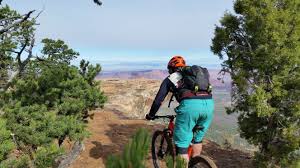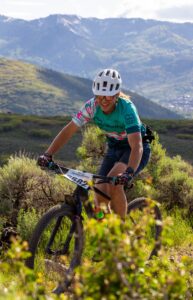Key Takeaways
Mountain biking offers significant mental and physical benefits for seniors, enhancing well-being and cognitive function.
Selecting the right bike with proper fit and comfort features is crucial for a safe and enjoyable experience.
Mastering basic skills and safety measures can help seniors navigate trails with confidence and ease.
Participating in mountain biking groups can provide motivation, camaraderie, and support for senior riders.
Regular riding and training plans tailored for seniors can improve endurance and overall physical health.
Embracing the Trails: A Guide for Senior Mountain Bikers
Mountain biking isn’t just a sport for the young and reckless. It’s a gateway to adventure and vitality for seniors too. Let’s get something straight—age is just a number, especially when it comes to enjoying the great outdoors on two wheels. With the right approach, you can boost your mental agility and find immense joy in mountain biking, no matter your age.
Discover the Joy and Benefits of Mountain Biking at Any Age
Why mountain biking, you ask? Well, it’s about more than just exercise. It’s a full package deal that benefits both your mind and body. Mountain biking gets your heart pumping, which is excellent for cardiovascular health. It also strengthens your muscles and improves balance and coordination. Most importantly, it’s a blast!
Simple Steps to Get Started on Your Mountain Biking Adventure
Before you hit the trails, let’s talk preparation. You’ll want to gear up properly, and that starts with a good helmet and a reliable mountain bike. Ensure your bike’s size is appropriate for your height, and don’t skimp on comfort. A comfortable saddle and grips can make all the difference on a long ride.
Next, consider your clothing. Wear layers that you can add or shed as needed, and opt for moisture-wicking fabrics to keep you dry. And don’t forget a pair of sturdy shoes with good grip—your feet will thank you when you’re navigating rocky paths.
Choosing the Right Gear for Comfort and Safety
Now, let’s talk gear. Safety is paramount, so invest in a well-fitting helmet and consider additional protection like gloves and padded shorts. Your eyes need safeguarding too, so a pair of sunglasses or clear lenses will protect against dust and debris.
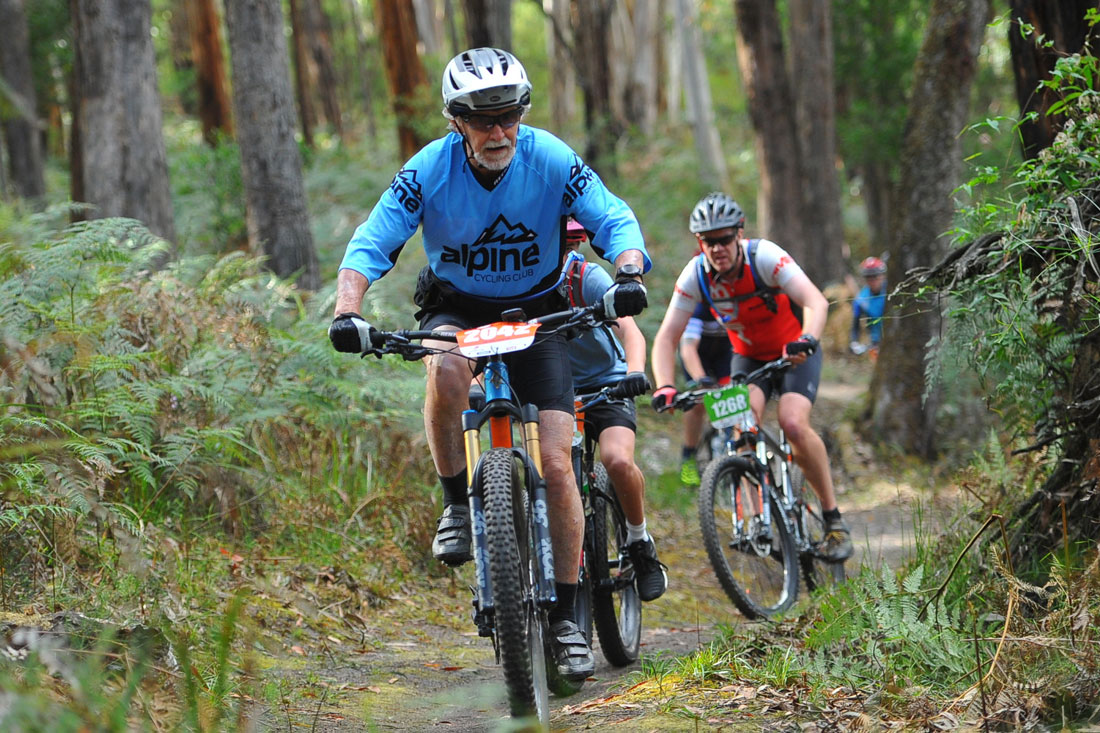
Finding Your Ride: Selecting the Perfect Mountain Bike
Choosing the right mountain bike is like finding a dance partner—it needs to match your rhythm and style. For seniors, comfort and ease of handling take precedence.
The Importance of Bike Fit for Seniors
Getting the bike fit right is crucial. A bike that’s too large or too small can lead to discomfort and control issues. When you’re testing bikes, pay attention to how easy it is to mount and dismount, as well as how comfortably you can reach the handlebars and pedals.
For example, Joan, a sprightly 65-year-old, recently took up mountain biking. She opted for a bike with a lower standover height, which made it easier for her to get on and off the bike. It was a game-changer for her confidence and enjoyment on the trails.
A bike’s standover height is the space between the top tube and your crotch when you’re standing over the bike. This is especially important for seniors, as a lower standover height can provide easier access and more stability.
Suspension and Wheel Size Considerations
When it comes to suspension, a full-suspension bike can offer a more comfortable ride by absorbing the bumps and shocks of uneven terrain. Wheel size also matters. Larger wheels, like 29-inch options, roll over obstacles more easily and provide a smoother ride, which can be gentler on your body.
Preparation is Key: Safety and Skill Enhancement
Before diving into the thrill of mountain biking, it’s essential to prepare yourself with the necessary skills and safety knowledge.
Basic Skills Every Senior Mountain Biker Should Master
Start with the basics. Practice your balance by standing over the bike and gently leaning from side to side. Get used to the feel of the bike and how it responds to your movements. Here are some fundamental skills to focus on:
Braking smoothly and effectively, without skidding.
Shifting gears to maintain a comfortable pedaling pace.
Navigating turns and learning how to lean into them.
Essential Mountain Biking Safety Tips
Safety always comes first. Always tell someone where you’re going and when you expect to return. Bring a basic repair kit, plenty of water, and snacks. And remember, there’s no shame in walking your bike if a section of trail feels beyond your comfort level.
With these initial steps, you’re well on your way to becoming a confident senior mountain biker. Remember, the goal is enjoyment and health, so go at your own pace and savor the ride.
Navigating the trails is not just about pedaling through; it’s about understanding the path ahead. Trail difficulty ratings are there to help you choose a route that matches your skill level and comfort.
Understanding Trail Difficulty Ratings
Trails are usually rated by color codes, similar to ski slopes. Green circles signify easy trails, perfect for beginners. Blue squares indicate intermediate difficulty, and black diamonds are for advanced riders. Always start with easier trails and progress as your skills improve. This approach will keep you safe and build your confidence gradually.
Now that you’re familiar with the ratings, it’s time to tackle the ups and downs literally.
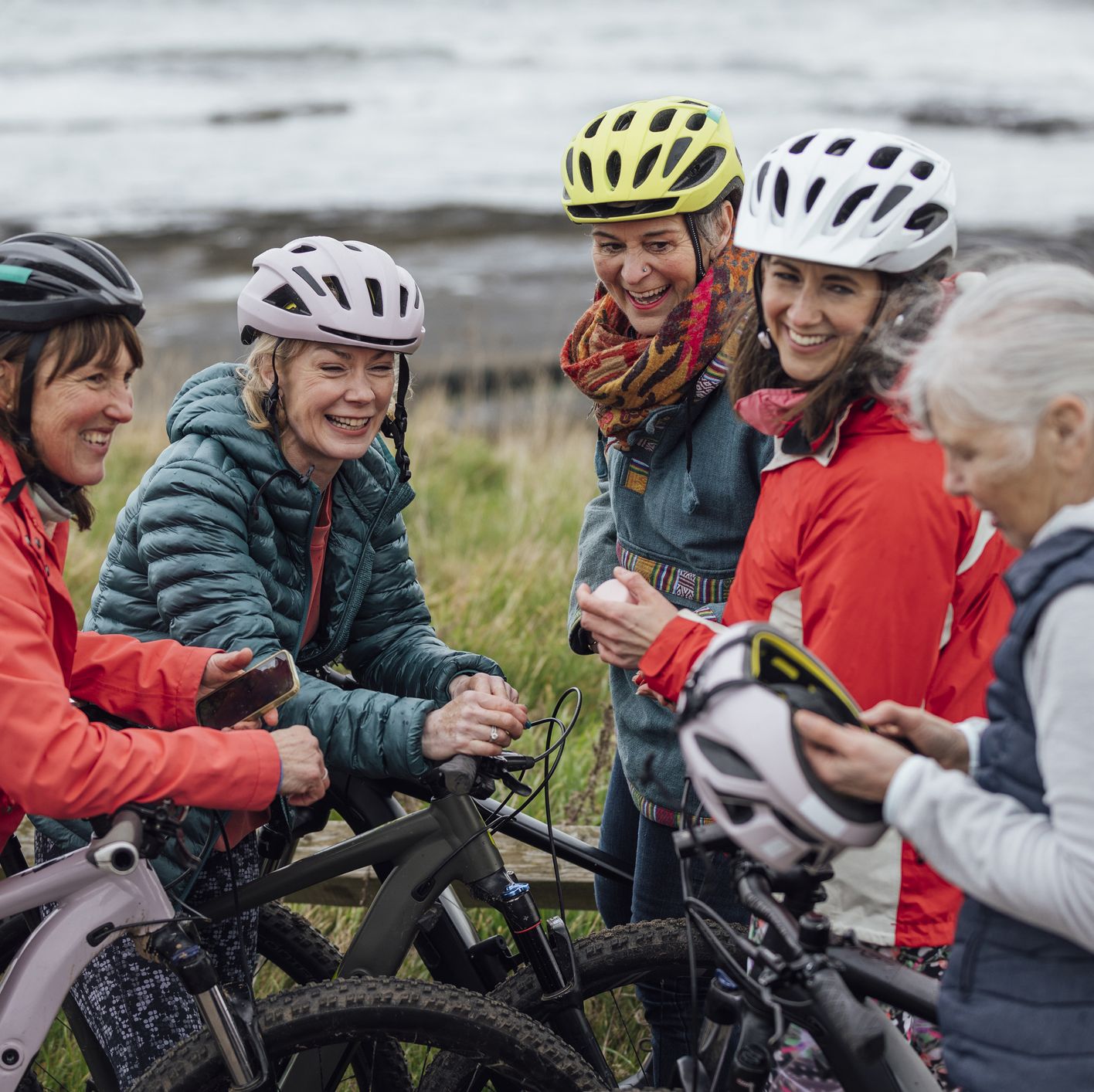
Techniques for Uphill and Downhill Cycling
Uphill riding is all about conserving energy. Shift to a lower gear before the climb gets steep and maintain a steady, comfortable pace. Keep your body relaxed and your weight centered over the bike. For downhill rides, shift your weight back slightly and use your brakes sparingly to avoid skidding. Always look ahead and choose the smoothest path down the slope.
Mountain biking isn’t just about the physical challenge—it’s a mental game too.
Mental Agility: Engaging Your Mind on the Trails
As you wind through the trees and over the hills, mountain biking offers a unique way to sharpen your mind. The focus required to navigate trails can improve cognitive function, and the natural environment has been shown to reduce stress and promote mental clarity.
Cognitive Benefits of Mountain Biking for Seniors
Research suggests that regular physical activity, like mountain biking, can help keep our brains healthy as we age. The quick decision-making and problem-solving skills needed on the trails are a form of mental exercise that can keep the mind sharp and alert.
But there’s more to it than just the cognitive perks. Discover the additional benefits with our guide on eBike exploration for seniors.
Mountain biking encourages mindfulness, as you must remain present and focused on the path ahead.
The sport can also foster a sense of accomplishment and boost self-esteem, especially as you master new skills.
It’s a natural mood enhancer, thanks to the endorphins released during physical activity.
Mindful Biking: Practices for Mental Wellness
Biking mindfully means being aware of your surroundings, your breathing, and the sensations in your body. Take a moment before your ride to set an intention, whether it’s to enjoy the scenery or challenge yourself on a new trail. This practice can turn your ride into a moving meditation, bringing a sense of peace and satisfaction.
Mountain biking also offers a wonderful opportunity to connect with others.
Community and Camaraderie: Joining Mountain Biking Groups
Riding with a group can enhance your mountain biking experience. It’s not only about safety in numbers but also about the shared joy of the ride. Groups provide a sense of community and are a great way to meet new friends who share your passion.
How to Find Local Riding Groups and Events
Start by checking out local bike shops or community boards. Many shops host group rides or know of local clubs you can join. Online platforms like Meetup.com or local Facebook groups are also excellent resources to find fellow riders. Don’t hesitate to reach out and ask—most biking communities are welcoming and eager to help newcomers.
The Power of Group Rides for Motivation and Enjoyment
Group rides can be incredibly motivating. There’s something about being part of a pack that can push you to ride further and tackle trails you might not have considered on your own. Besides that, the shared experiences and stories at the end of the day are priceless.
With a supportive community and a bit of grit, you can build the endurance needed to enjoy mountain biking to its fullest.
Maintaining Momentum: Building Endurance and Stamina
Building endurance and stamina is key to enjoying longer rides and more challenging trails. Start with shorter rides and gradually increase the distance and intensity. Consistency is your best friend here—regular rides will improve your fitness over time.
Integrate interval training into your rides to build stamina.
Incorporate rest days to allow your body to recover.
Stay hydrated and fuel your body with healthy, energy-rich foods.
As you continue to ride, listen to your body. If something doesn’t feel right, take a break or seek advice. There’s no rush in this journey—it’s about finding your pace and enjoying the ride.
Creating a Training Plan for Longevity in Mountain Biking
A structured training plan can help you achieve your mountain biking goals. Start by setting realistic objectives, such as a certain number of rides per week or a target distance. Mix up your routes to keep things interesting and challenge different muscle groups. And remember, rest is just as important as the ride itself. A good plan includes downtime to recover and rebuild. For more guidance on creating a balanced routine, consider exploring mountain bikepacking essentials for additional tips on gear and setup.
How you plan your mountain biking journey can make all the difference in your overall experience. As a senior, taking a bit of extra time to plan can ensure you have a ride that’s both enjoyable and safe.
Adventures Await: Planning Your Mountain Biking Journey
Adventure is not just for the young; it’s for the young at heart. As a senior mountain biker, the trails are an open invitation to explore, to breathe in the fresh air, and to feel the exhilaration of life on two wheels. But before you set off, a little planning can go a long way.
First, consider the type of terrain you’re comfortable with. Are you looking for a gentle ride through forest paths, or are you ready to tackle some moderate hills? Understanding your preferences and limits will help you choose the right trails and ensure you have a great time.
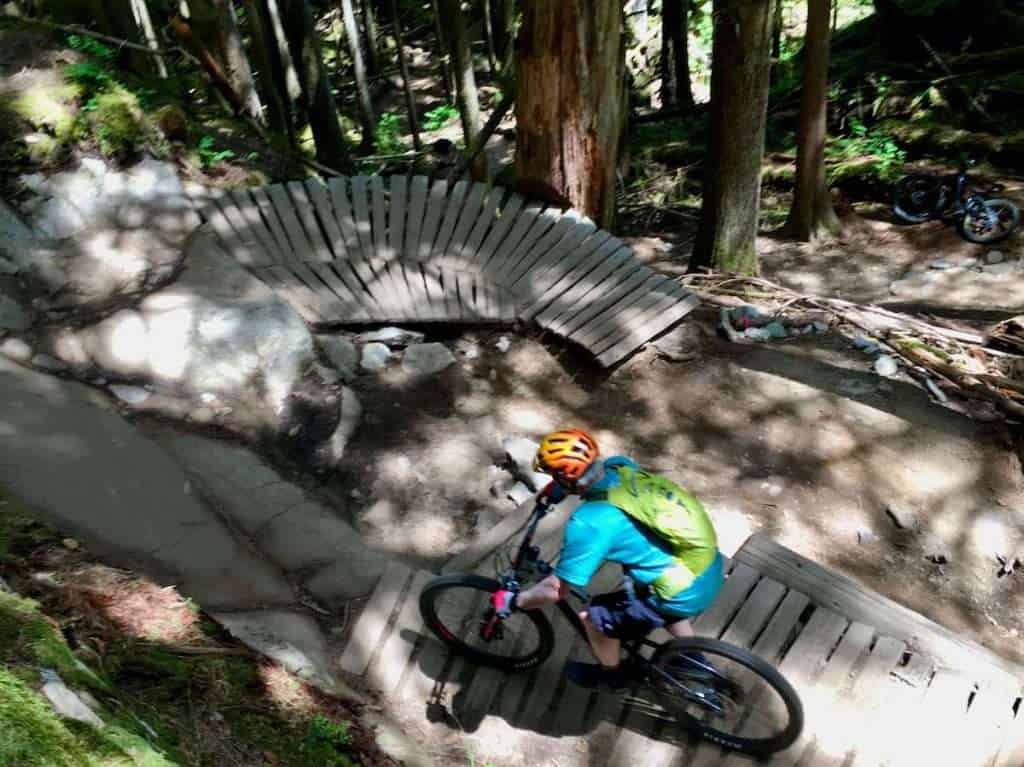
Mapping Out Your Next Ride: Trail Selection for the Mature Biker
Choosing the right trail is crucial. Look for trails that match your fitness level and riding skills. Many parks and trail systems provide maps with trail ratings, and local bike shops can be a treasure trove of information. Start with shorter, less technical trails and build up to more challenging rides as your confidence grows.
It’s also wise to check the weather forecast and trail conditions. Wet or icy trails can be hazardous, especially for those who may not have as quick a reaction time as they used to. If the conditions don’t look favorable, it might be best to save your ride for another day.
Lastly, consider the logistics. How will you get to the trailhead? Do you have a plan for emergencies? A little forethought can prevent a lot of headaches. Ensure you’re prepared with a comprehensive guide on mountain bikepacking essentials to help plan your adventure.
Embracing Technology in Route Planning and Tracking
In this digital age, technology can be a senior rider’s best friend. Use apps and online resources to plan your route and track your ride. GPS devices can help you stay on course, and fitness trackers can monitor your heart rate and exertion level to ensure you’re not overdoing it.
Apps like Trailforks and MTB Project provide detailed maps and user reviews that can help you find trails suited to your skill level and interests. They can also give you a heads up on any obstacles or challenges you might encounter on the way.
Frequently Asked Questions
As a senior mountain biker, you’re bound to have questions. Here are some answers to the most common queries to help you get started on your mountain biking journey.
What is the ideal mountain bike type for seniors?
The ideal mountain bike for seniors is one that offers stability, comfort, and ease of use. Look for a bike with a step-through frame for easier mounting and dismounting, adjustable suspension to absorb shocks, and upright handlebars for a more comfortable riding position. Many seniors also appreciate bikes with lower gears for easier pedaling up hills.
How can I improve my balance for mountain biking?
Improving balance for mountain biking can be achieved through specific exercises and practice. Try activities like yoga or Pilates, which strengthen core muscles and enhance stability. On the bike, practice standing on one pedal at a time while stationary, and focus on smooth, controlled movements when riding.
Are electric mountain bikes a good option for seniors?
Electric mountain bikes (e-bikes) can be a fantastic option for seniors. They provide pedal assistance, which can help you tackle tougher terrain and longer rides without overexerting yourself. Just ensure that the e-bike you choose is comfortable and fits your body well.
What should I do if I feel nervous about mountain biking?
If you feel nervous about mountain biking, start slow and build up your confidence gradually. Practice riding on flat, open spaces before moving to trails. Consider taking a mountain biking class or going on a group ride with more experienced riders who can offer support and guidance.
Can mountain biking be a family activity for all ages?
Absolutely! Mountain biking can be a wonderful family activity that spans generations. It’s a great way to spend quality time together, enjoy nature, and stay active. Just ensure everyone has the appropriate gear and chooses trails that are suitable for all skill levels.

